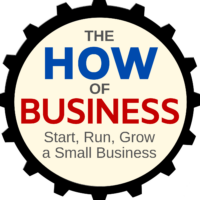Ramping Your Consumer Goods Brand.
How do you realize exponential growth with your consumer brand, and yet not try to grow too quickly and fail? Dr. James Richardson shares his unique insights and approach to ramping your CPG brand, and the story of how he leveraged his Ph.D in Anthropology to help companies achieve exponential growth.
 Dr. James Richardson is the founder of Premium Growth Solutions, a strategic planning consultancy for early-stage consumer packaged goods brands. As a professionally trained cultural anthropologist turned business strategist, he has helped more than 75 CPG brands with their strategic planning, including brands owned by Coca-Cola Venturing and Emerging Brands, The Hershey Company, General Mills, Kraft Foods, ConAgra Brands, and Frito-Lay as well as other emerging brands.
Dr. James Richardson is the founder of Premium Growth Solutions, a strategic planning consultancy for early-stage consumer packaged goods brands. As a professionally trained cultural anthropologist turned business strategist, he has helped more than 75 CPG brands with their strategic planning, including brands owned by Coca-Cola Venturing and Emerging Brands, The Hershey Company, General Mills, Kraft Foods, ConAgra Brands, and Frito-Lay as well as other emerging brands.
James is the author of “Ramping Your Brand: How to Ride the Killer CPG Growth Curve”, the #1 Best-seller in Business Consulting on Amazon. He also hosts his own podcast—Startup Confidential.
James lives in Tucson, Arizona.
Topics and questions addressed in this episode of The How of Business podcast include:
- Ramping Your Consumer Goods Brand with Dr. James Richardson
- What led you to a Ph.D. in Anthropology (wanted to be a professor) and how does it influence the work that you do now?
- Why did you decide to launch your own firm – Premium Growth Solutions?
- Why did you write the book, and who is it for? (Are you a skateboarder?)
- Exponential Growth depends on Superb Velocity Management…
- What causes exponential growth?
- What’s the primary problem with trying to grow a new consumer brand too quickly?
- Please introduce the 4-Part approach to thinking smarter about growth as a CPG entrepreneur, and we can discuss these as the primary basis for our conversation….
- Part 1. Designing to Command a Premium
This is where many founders fail without realizing it. There is a cultural logic behind premium products that grow extremely fast. You should learn it. - Part 2. Managing A Small Experiment
Don’t hit the gas too early. Successful CPG startups manage a rolling, iterative experiment until key KPIs appear. You should learn this art. This means remaining geographically local during the initial MVPs? - Part 3. Fine Tuning the Conversion Playbook
Steady velocity growth is essential to ramping your brand. Your team needs to learn the art of sustaining it in key geographies, so that you don’t have to buy premature distribution to obtain growth. - Part 4. Accelerating to Scale
Episode Host: Henry Lopez is a serial entrepreneur, small business coach, and the host of this episode of The How of Business podcast show – dedicated to helping you start, run and grow your small business.
More About Consumer Goods:
Consumer goods are products that are purchased for direct use or consumption by the end consumer. Unlike capital goods, which are used to produce other goods, consumer goods are the end result of production and manufacturing and are meant to serve a direct utility in the lives of consumers.
Types of Consumer goods include:
- Durable Goods: These are goods that have a long lifespan and are not consumed or destroyed in a single use. Examples include furniture, cars, and appliances.
- Non-Durable Goods: These are goods that are consumed quickly or have a short lifespan. Examples include food, toiletries, and cleaning supplies. These are the types of consumer goods James Richardson is referring to in this episode of The How of Business podcast.
- Fast-Moving Consumer Goods (FMCG): These are high-volume, low-margin goods that are quickly sold and replaced. Examples include snacks, beverages, and basic over-the-counter medicines. These are also examples of the types of consider products James Richardson is referring to in this episode.
- Luxury Goods: These are goods that have a high value and are often considered status symbols. Examples include designer clothing, high-end electronics, and luxury cars.
- Perishable Goods: These are goods that have a very short lifespan and need to be consumed quickly. Examples include fresh fruits, vegetables, and dairy products.
Consumer goods are essential for everyday life and constitute a large part of the economy. They are indicators of economic health; high consumer goods sales often signify a robust economy, while low sales can indicate economic downturns. Understanding consumer goods is crucial for businesses, as it helps them to better target their products, set appropriate prices, and develop effective marketing strategies.
By understanding the different types of consumer goods and their characteristics, small businesses can better align their production, marketing, and distribution strategies to meet consumer needs and demands.
Resources:
Books mentioned in this episode:
[We receive commissions for purchases made through these links (more info)].
- Ramping Your Brand: How to Ride the Killer CPG Growth Curve by James Richardson
- Launching New Ventures: An Entrepreneurial Approach by Kathleen R. Allen
Other Podcast Episodes:
You can find other episodes of The How of Business podcast, the best small business podcast, on our Archives page.

